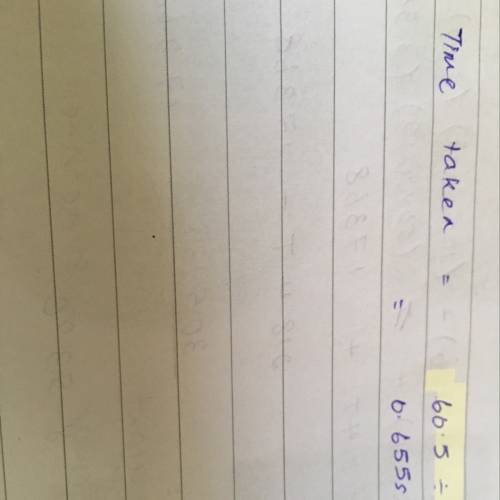

Answers: 1
Another question on Physics

Physics, 21.06.2019 22:00
Na food processing facility, a spherical container of inner radius r1 5 40 cm, outer radius r2 5 41 cm, and ther- mal conductivity k 5 1.5 w/m · k is used to store hot water and to keep it at 100°c at all times. to accomplish this, the outer surface of the container is wrapped with a 800-w electric strip heater and then insulated. the temperature of the inner surface of the container is observed to be nearly 120°c at all times. as- suming 10 percent of the heat generated in the heater is lost through the insulation, (a) express the differential equation and the boundary conditions for steady one-dimensional heat conduction through the container, (b) obtain a relation for the variation of temperature in the container material by solving the differential equation, and (c) evaluate the outer surface tempera- ture of the container. also determine how much water at 100°c this tank can supply steadily if the cold water enters at 20°c.
Answers: 2

Physics, 21.06.2019 22:30
Follow these directions and answer the questions. 1. shine a pencil-thin beam of light on a mirror perpendicular to its surface. (if you don't have a laser light as suggested in the video, you can make a narrow beam from a flashlight by making a cone from black construction paper and taping it over the face of the flashlight.) how does the light reflect? how does the relationship of incident to reflected ray relate to the reflection of water waves moving perpendicular to a barrier? 2. shine a pencil-thin beam of light on a mirror standing on a sheet of paper on the table (or floor) so that you can mark the incident ray and reflected ray. (you can support the mirror from the back by taping it to a wooden block.) 3. mark a line on the paper representing the reflective surface. (the reflective surface of a mirror is usually the back edge.) 4. draw a dashed line perpendicular to the mirror surface at a point where the incident and reflected ray meet. this perpendicular is called a normal to the surface. 5. measure the angles between the rays and the normal. the angle of incidence is the angle formed by the incident ray and the normal to the surface. the angle formed by the reflected ray and normal is called the angle of reflection (r). what is the angle of incidence? what is the angle of reflection? 6. repeat for several different angles. (see report sheet for details.) what appears to be the relationship between the angle of incidence and angle of reflection? in science 1204, what was the relationship for these two angles made by the reflection of waves in a ripple tank? 7. roll a ball bearing so that it hits a fixed, hard surface (a metal plate) at several angles (including head-on). observe the way in which the ball bearing reflects. what generalization can you make about how a ball bearing reflects from a wall? have you proved that light can only behave like a wave?
Answers: 1

Physics, 22.06.2019 05:30
Choose the most likely outcome of this scenario: jen decided to go bike riding without a helmet. while no one is around during her ride, she is thrown from her bike when her wheel goes into a pothole. she is not injured, but she is terrified to get back on her bike. what happens next? a. her physical health is affected even though she wasn't hurt. b. her mental and emotional health are affected because she is afraid to get back on her bike. c. her social health is affected because she is worried her friends saw the fall. d. her overall health is not affected at all by her fall.
Answers: 1

Physics, 22.06.2019 19:30
Petroleum contains energy. a. light b. kinetic c. chemical d. mechanical
Answers: 2
You know the right answer?
Abaseball is thrown from the pitcher’s mound to home plate, a distance of 60.5 feet. if the baseball...
Questions

Mathematics, 10.10.2019 20:00

Social Studies, 10.10.2019 20:00


Chemistry, 10.10.2019 20:00





Mathematics, 10.10.2019 20:00


Mathematics, 10.10.2019 20:00


History, 10.10.2019 20:00






History, 10.10.2019 20:00




